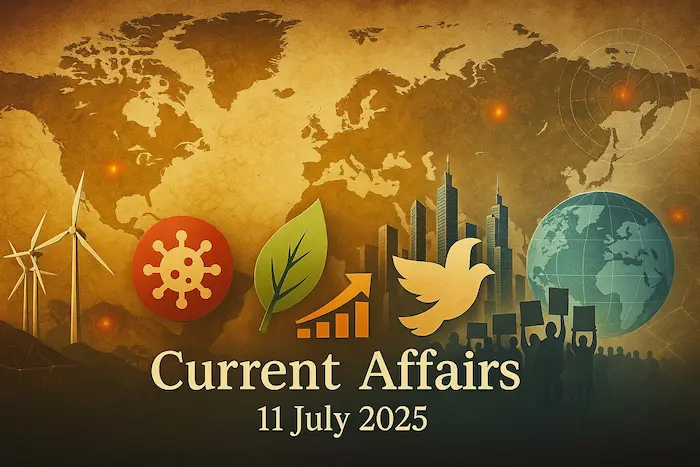1. Aspirational District Mineral Foundation (DMF) Programme – Governance
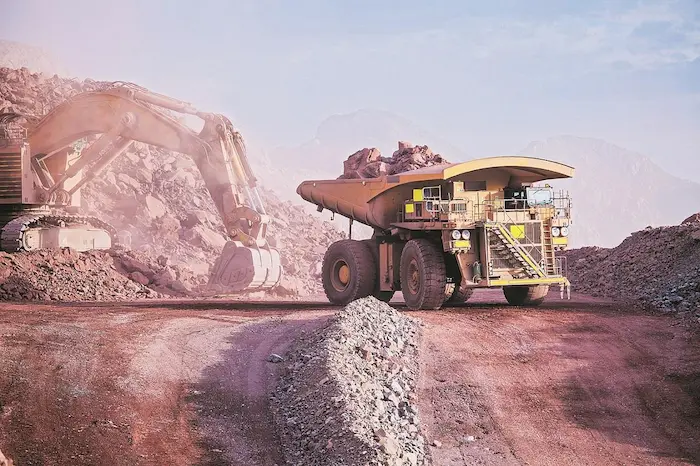
Why in News?
The Union Minister of Coal and Mines has unveiled the operational guidelines for the Aspirational DMF Programme, aiming to better align District Mineral Foundation (DMF) initiatives with the goals of the Aspirational District and Aspirational Block Programmes.
What is the District Mineral Foundation (DMF)?
- Legal Backing: Introduced under the Mines and Minerals (Development and Regulation) Amendment Act, 2015.
- Structure: A non-profit trust.
- Objective: To work for the welfare of people and areas affected by mining activities.
- Funding Source: Contributions from mining leaseholders—both for major and minor minerals.
- Governance: Managed by state governments to promote localized, decentralized development.
Key Features of the Aspirational DMF Programme
- Launched by the Ministry of Coal and Mines.
- Ensures better planning and social impact alignment with national priorities.
- Focus on collaboration across Centre, State, and District levels.
- Intended to maximize the socio-economic impact of DMF funds.
Contextual Background: Other Related Initiatives
1. Aspirational District Programme (ADP)
- Launched: January 2018 by NITI Aayog.
- Coverage: 117 most underdeveloped districts.
- Key Pillars:
- Convergence of government schemes.
- Collaboration between central & state officials.
- Competition among districts for better performance.
- Indicators: 49 metrics across Health, Education, Agriculture, Financial Inclusion, and Infrastructure.
- Terminology Shift: Uses the term “Aspirational” instead of “backward” to avoid negative connotation.
2. Aspirational Block Programme (ABP)
- Announced: Union Budget 2022–23.
- Focus: Targets underdeveloped blocks, especially in rural areas.
- Coverage: 500 blocks across 31 states/UTs.
- Priority States: High concentration in Uttar Pradesh, Bihar, etc.
Exam Connect – Possible Questions
Prelims
- Which of the following statements is correct regarding the District Mineral Foundation (DMF)?
A. It is funded by central government grants.
B. It is a profit-oriented body managed by private mining firms.
C. It is a non-profit trust funded by mining leaseholders.
D. It is managed directly by NITI Aayog.
Answer: C. It is a non-profit trust funded by mining leaseholders. - The Aspirational District Programme is based on which of the following principles?
1. Convergence
2. Collaboration
3.Competition
Select the correct answer using the code below:
A. 1 and 2 only
B. 2 and 3 only
C. 1 and 3 only
D. 1, 2, and 3
Answer: D. 1, 2, and 3
Mains
- Discuss the significance of aligning the District Mineral Foundation (DMF) initiatives with the Aspirational District and Block Programmes. How can such convergence enhance local governance and development outcomes?
- Critically evaluate the role of decentralized governance in the effective utilization of DMF funds in mineral-rich but socio-economically backward districts.
2. India’s Critical Minerals Diplomacy: Strategic Engagement through Minilateral ‘Clubs’ – International Relations
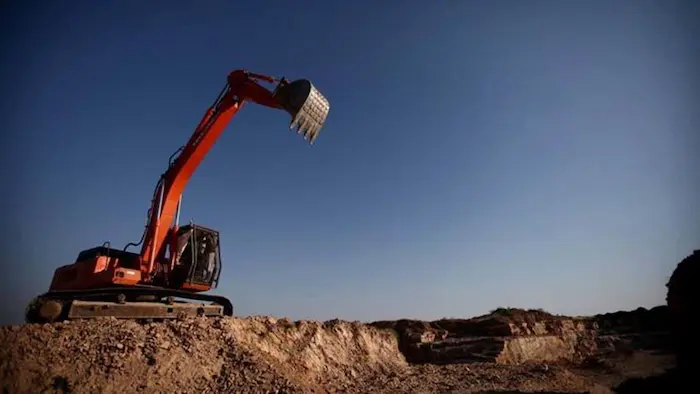
Why in News?
India is strengthening its mineral diplomacy through strategic participation in minilateral groupings like the Quad and the Minerals Security Partnership (MSP).
This move aims to diversify critical mineral supply chains, reduce dependency on China, and support India’s green energy transition.
What are Critical Minerals?
- Definition: Minerals essential for economic growth, clean energy technologies, and national security.
- Key Examples: Lithium, cobalt, rare earth elements, nickel, graphite, and manganese.
- Applications:
- Electric vehicles (EVs)
- Solar panels & wind turbines
- Battery storage systems
- Semiconductors
India’s Strategic Challenges & Needs
- Heavy dependence on China for processing and supply of critical minerals.
- Export restrictions by China (e.g., on rare earth magnets) increase vulnerability.
- Weak domestic capacity:
- Underexplored reserves.
- Lack of advanced mining and refining technology.
- Political and financial risks in mineral-rich countries deter private investment.
India’s Response: Mineral Diplomacy through Minilateral Groupings
1. Quad (India, US, Japan, Australia)
- Launched the Critical Minerals Initiative.
- Aims to secure and diversify supply chains.
- Facilitates knowledge sharing, tech transfer, and joint exploration.
2. Minerals Security Partnership (MSP)
- Composed of US, EU, UK, Japan, South Korea, and others (India joined in 2023).
- Ensures transparent, secure, and sustainable mineral supply chains.
- Promotes blended finance, co-development of mining infrastructure, and shared expertise.
3. Bilateral Agreements
- Argentina & Zambia: Agreements for mineral exploration and mining.
- UAE, UK, US: Cooperation in processing and recycling technologies.
- Risk: Processing infrastructure may become stranded assets without steady mineral inputs.
Strategic Advantages for India
- Access to foreign expertise in exploration and refining (e.g., from Australia, Japan).
- Risk-sharing through financial and technical collaboration.
- Supports India’s ambitions to:
- Be a global hub for green technology manufacturing.
- Achieve net zero emissions by 2070.
- Enhance energy security and industrial competitiveness.
Exam Connect – Possible Questions
Prelims
- Which of the following minerals are considered critical for clean energy technologies
1. Lithium
2. Bauxite
3. Cobalt
4. Rare Earth Elements
Select the correct answer:
A. 1 and 2 only
B. 1, 3, and 4 only
C. 2 and 4 only
D. 1, 2, 3, and 4
Answer: B. 1, 3, and 4 only - The Minerals Security Partnership (MSP), of which India is a member, aims to:
A. Regulate gold trading globally.
B. Promote sustainable and secure critical mineral supply chains.
C. Establish common tariff policies among members.
D. Ensure maritime security in the Indo-Pacific.
Answer: B. Promote sustainable and secure critical mineral supply chains.
Mains
- “India’s participation in minilateral forums like the Quad and MSP marks a strategic shift in its resource diplomacy.” Analyze this shift in the context of India’s energy transition and national security.
- Discuss the challenges and opportunities for India in securing critical mineral supply chains. How can India ensure a balance between global cooperation and domestic self-reliance in this sector?
3. Carbon Border Adjustment Mechanism (CBAM) – Environment
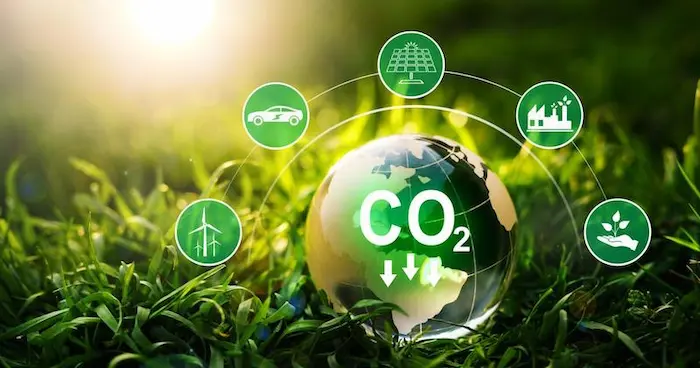
Why in News?
The BRICS nations (Brazil, Russia, India, China, South Africa) have jointly rejected the European Union’s Carbon Border Adjustment Mechanism (CBAM), criticizing it as a discriminatory trade policy that could harm developing economies under the guise of climate action.
What is CBAM?
Definition:
The Carbon Border Adjustment Mechanism (CBAM) is a climate-related import duty imposed by the European Union (EU) on carbon-intensive goods imported from non-EU countries.
Objective:
To prevent carbon leakage (i.e., shifting of industries to countries with lax environmental norms) and align imports with the EU’s domestic carbon pricing under its Emissions Trading System (ETS).
Key Features of CBAM
| Feature | Description |
|---|---|
| Legal Basis | Part of the “Fit for 55” climate package (EU Green Deal). |
| Emission Declaration | Importers must report carbon emissions of goods like steel, cement, etc. |
| Certificates | Must surrender CBAM certificates, priced similarly to the EU ETS. |
| Transition Period | 2023–2025: Reporting only, no financial obligation. |
| Full Implementation | Begins January 1, 2026. |
| Sectors Covered (Initial) | Iron & steel, cement, fertilizers, aluminum, electricity, hydrogen. |
Why Is CBAM Controversial?
Trade Discrimination Concerns:
- Developing countries argue CBAM is a unilateral and protectionist trade measure.
- It could violate WTO norms and climate equity principles under the Paris Agreement.
Climate Justice Debate:
- Critics say CBAM punishes developing nations that:
- Have contributed little historically to global emissions.
- Still require carbon-based industries for development and poverty alleviation.
Implications for India
Economic Impact:
- Major Indian exports (e.g., steel, aluminum, cement) may become less competitive in the EU market.
- Exporters may face higher compliance costs or lose market access.
Sectoral Concerns:
- India’s iron & steel industry—largely coal-based—is particularly vulnerable.
- Risks of carbon taxes being imposed on small and medium exporters.
Diplomatic Response:
- India, along with BRICS, has opposed CBAM at international forums, calling for:
- Technology transfer and climate finance instead of trade penalties.
- Respect for Common But Differentiated Responsibilities (CBDR) under global climate agreements.
Exam Connect – Possible Questions
Prelims
- The Carbon Border Adjustment Mechanism (CBAM) has been introduced by which of the following entities?
A. World Trade Organization
B. European Union
C. United Nations Framework Convention on Climate Change
D. G7 Countries
Answer: B. European Union - Which of the following sectors are initially covered under the CBAM?
1. Cement
2. Textiles
3. Steel
4. Fertilizers
Select the correct answer:
A. 1 and 2 only
B. 1, 3, and 4 only
C. 2, 3, and 4 only
D. 1, 2, 3, and 4
Answer: B. 1, 3, and 4 only
Mains
- The Carbon Border Adjustment Mechanism (CBAM) poses both a challenge and an opportunity for India. Discuss its implications for Indian industry and international trade.
- Critically examine the CBAM in light of the principle of ‘Common But Differentiated Responsibilities’. How can India respond to such climate-related trade measures diplomatically and strategically?
4. Catastrophe Bonds (Cat Bonds): Financial Innovation for Climate Resilience – Economy
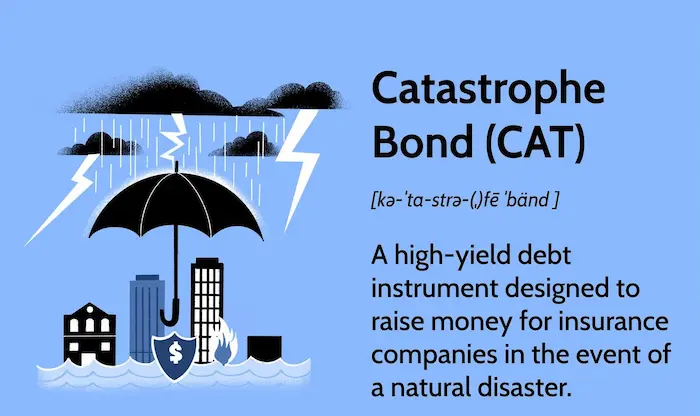
Why in News?
India is exploring the use of Catastrophe Bonds (Cat Bonds) as an innovative financial mechanism to strengthen disaster risk financing, improve post-disaster recovery, and enhance the country’s climate resilience, especially as the frequency of natural disasters increases.
What are Catastrophe Bonds?
Definition:
Catastrophe Bonds are risk-linked securities that allow governments or insurance companies to transfer disaster-related financial risks to global investors.
Mechanism:
| Scenario | Investor Outcome |
|---|---|
| Disaster occurs | Investors lose part or all of their principal; funds go to sponsor for relief and reconstruction. |
| No disaster occurs | Investors receive high-interest payments (coupon rate) and full return of principal. |
- Cat bonds are typically used for low-probability, high-impact events like earthquakes, floods, or cyclones.
How Do Cat Bonds Work?
- Sponsor (e.g., Government of India) issues the bond.
- Funds are held in a collateral account.
- If a disaster meeting pre-defined parameters occurs:
- Funds are released to the sponsor.
- If no disaster occurs:
- Investors receive interest + full principal at maturity.
Example: Mexico has used cat bonds for earthquake and hurricane coverage, facilitated by the World Bank.
Why Are They Relevant for India?
India’s Disaster Profile:
- Increasing frequency and intensity of natural disasters:
- Cyclones, floods, landslides, heatwaves.
- Low insurance penetration in high-risk zones.
- Delayed post-disaster funding hinders recovery.
Advantages for India:
- Quick access to funds post-disaster.
- Reduces burden on fiscal budgets and ex-post relief.
- Leverages global capital for domestic resilience.
- Encourages data-driven risk assessment and disaster planning.
Key Stakeholders
| Stakeholder | Role |
|---|---|
| Government | Issuer/Sponsor of the bond. |
| World Bank/IFIs | Intermediary & facilitator. |
| Investors | Hedge funds, pension funds—attracted by high returns & diversification. |
Challenges and Criticisms
- Trigger Complexity: Payout depends on complex event definitions (e.g., wind speed, seismic intensity).
- “Wasted Cost” Perception: If no disaster occurs, premium payments may seem wasteful.
- High Initial Costs: Especially in absence of credible risk models or past disaster data.
- Limited Domestic Market: India needs to build institutional capacity and regulatory frameworks.
Exam Connect – Possible Questions
Prelims
- Which of the following best describes a Catastrophe Bond (Cat Bond)?
A. A bond issued to fund government deficits.
B. A security that transfers disaster risk from issuer to investors.
C. A bond issued by insurance companies for infrastructure funding.
D. A fixed income bond with guaranteed returns.
Answer: B. A security that transfers disaster risk from issuer to investors. - In the context of Catastrophe Bonds, the principal amount is used for:
A. Building new power plants.
B. Providing subsidies to insurance companies.
C. Funding post-disaster relief and reconstruction.
D. Paying pensions to disaster victims.
Answer: C. Funding post-disaster relief and reconstruction.
Mains
- What are Catastrophe Bonds? Examine their potential in strengthening disaster resilience and fiscal stability in disaster-prone countries like India.
- Critically evaluate the feasibility of adopting catastrophe bonds in India’s disaster risk management strategy. What challenges need to be addressed for successful implementation?
5. UN Framework Convention on Climate Change (UNFCCC): Challenges, Structure & India’s Role – Environment

Why in News?
The UNFCCC is facing a credibility crisis, triggered by inadequate climate action, weak enforcement, and growing dissatisfaction among developing countries—including India—over unfulfilled promises, particularly concerning finance and equity.
What is the UNFCCC?
Definition:
The United Nations Framework Convention on Climate Change (UNFCCC) is a global treaty established in 1992 at the Earth Summit (Rio de Janeiro) to stabilize greenhouse gas concentrations and combat global climate change.
Key Milestones:
- Entered into force: March 21, 1994
- Parties: 197 (includes all UN member states)
- Headquarters: Bonn, Germany
Institutional Structure of the UNFCCC
| Body | Function |
|---|---|
| COP (Conference of the Parties) | Annual decision-making summit for reviewing progress & setting targets |
| SBSTA (Scientific & Technological Advice) | Provides scientific guidance on climate data & policy |
| SBI (Implementation) | Reviews implementation of agreements & national reports |
| Secretariat | Coordinates logistics, reporting, and documentation |
Party Classifications under UNFCCC
| Category | Description |
|---|---|
| Annex I | Developed countries with binding emission reduction targets |
| Annex II | Subset of Annex I; also required to fund technology & capacity for others |
| Non-Annex I | Developing countries (e.g., India) with no mandatory targets |
| LDCs | Least Developed Countries receive priority adaptation support |
Major Agreements under UNFCCC
- Kyoto Protocol (1997):
- Legally binding targets for developed countries.
- Introduced carbon trading mechanisms (CDM, JI, IET).
- Paris Agreement (2015):
- Voluntary Nationally Determined Contributions (NDCs).
- Aims to limit global warming to well below 2°C (preferably 1.5°C).
- Legally binding framework, but enforcement is non-punitive.
India’s Role and Commitments under UNFCCC
- Ratified: 1993
- Classification: Non-Annex I (Developing Country)
- Key Targets (Updated NDCs):
- Reduce emissions intensity of GDP by 45% by 2030 (from 2005 levels).
- Achieve 50% cumulative power capacity from non-fossil sources by 2030.
- Enhance carbon sink through afforestation.
- India advocates climate equity, emphasizing Common but Differentiated Responsibilities (CBDR).
Current Challenges Facing the UNFCCC
Credibility Crisis Drivers:
- Weak Enforcement: No penalty for countries missing their targets.
- Delays in Consensus: Decisions require unanimity, leading to diluted or delayed agreements.
- Neglect of Developing Countries’ Concerns: Issues like climate finance, loss and damage, and adaptation support remain under-addressed.
- Lack of Accountability: Many developed countries fall short on climate finance commitments ($100 billion/year target unmet).
Exam Connect – Possible Questions
Prelims
- Which of the following bodies are part of the UNFCCC’s institutional structure?
1. COP (Conference of the Parties)
2. SBI (Subsidiary Body for Implementation)
3. IPCC (Intergovernmental Panel on Climate Change)
4. SBSTA (Subsidiary Body for Scientific and Technological Advice)
Select the correct answer:
A. 1, 2, and 4 only
B. 1, 3, and 4 only
C. 1 and 3 only
D. All of the above
Answer: A. 1, 2, and 4 only - Which of the following agreements are linked to the UNFCCC framework?
A. Montreal Protocol and Kyoto Protocol
B. Kyoto Protocol and Paris Agreement
C. Paris Agreement and Cartagena Protocol
D. Basel Convention and Paris Agreement
Answer: B. Kyoto Protocol and Paris Agreement
Mains
- Examine the institutional structure of the UNFCCC and assess its effectiveness in tackling global climate change.
- “The UNFCCC process has failed to reflect the voices of the developing world.” Critically analyze this statement with reference to India’s climate policy and global commitments.
6. ‘Nistar’ Diving Support Vessel: Boosting Indigenous Naval Capabilities – Defence & Security

Why in News?
‘Nistar’, India’s first indigenously designed and built Diving Support Vessel (DSV), has been delivered to the Indian Navy by Hindustan Shipyard Limited (HSL), marking a significant milestone in India’s defence self-reliance drive.
What is Nistar?
Overview:
- Type: Diving Support Vessel (DSV)
- Name Meaning: ‘Nistar’ (Sanskrit) – liberation, rescue, salvation.
- Builder: Hindustan Shipyard Limited, Visakhapatnam
- Design Certification: Built under Indian Register of Shipping (IRS) standards
Specifications and Capabilities
| Feature | Details |
|---|---|
| Length | 118 meters |
| Displacement | Nearly 10,000 tons |
| Diving Depth (Saturation) | Up to 300 meters |
| Diving Stage Depth | Up to 75 meters |
| Rescue Role | Functions as a ‘Mother Ship’ for DSRV (Deep Submergence Rescue Vessel) |
| Advanced Equipment | Includes Remotely Operated Vehicles (ROVs) for operations up to 1,000 meters |
| Indigenous Content | Approx. 75% – showcases Aatmanirbhar Bharat in defence manufacturing |
Strategic Role and Importance
Operational Use Cases:
- Submarine rescue missions in deep sea.
- Underwater salvage and maintenance operations.
- Diver deployment for strategic marine engineering tasks.
- Enhancing India’s submarine safety infrastructure.
Technological Significance:
- Incorporates high-precision diving systems, saturation chambers, and ROV-based salvage tools.
- Improves India’s underwater rescue response time and depth coverage.
Aatmanirbhar Bharat and Defence Indigenization
- Nistar aligns with the Government’s Make in India and Defence Acquisition Procedure (DAP) priorities.
- Strengthens naval manufacturing ecosystem and boosts confidence in Indian shipyards.
- Reduces reliance on foreign technology for critical underwater operations.
Exam Connect – Possible Questions
Prelims
- The ‘Nistar’ vessel, recently delivered to the Indian Navy, is designed for which of the following purposes?
A. Anti-submarine warfare
B. Aircraft carrier operations
C. Diving support and underwater rescue
D. Coastal patrol and surveillance
Answer: C. Diving support and underwater rescue - Which of the following statements is true about the Nistar vessel?
1. It can conduct deep sea saturation diving up to 300 meters.
2. It is built with 100% indigenous technology.
3. It is used for submarine-launched ballistic missile testing.
Select the correct answer:
A. 1 only
B. 1 and 2 only
C. 1 and 3 only
D. All of the above
Answer: A. 1 only
Mains
- Discuss the strategic and technological significance of the indigenous Diving Support Vessel ‘Nistar’ in the context of India’s maritime security and self-reliance initiatives.
- How do specialised vessels like ‘Nistar’ contribute to India’s naval preparedness and undersea rescue infrastructure? Evaluate their relevance in the broader Make in India defence strategy.
7. Measuring Inequality in India: Gini Index Controversy and Broader Implications – Economy
Why in News?
A recent government claim stated that India is the world’s fourth most equal country, citing a Gini Index of 25.5 from the World Bank’s Poverty and Equity Brief.
However, the assertion has sparked criticism from economists, who argue that the figure underestimates actual inequality, especially income and wealth disparities.
What is the Gini Index?
Definition:
A statistical measure of inequality, ranging from:
- 0 = Perfect equality
- 1 = Perfect inequality
Used for:
- Measuring income or consumption inequality
- Comparing economic disparity across nations and over time
India’s Gini Index: Disputed Interpretations
| Data Source | Gini Value | Basis | Interpretation |
|---|---|---|---|
| World Bank (Govt Claim) | 25.5 | Consumption | Suggests India is among most equal economies |
| World Inequality Database | 62 | Income | Indicates rising inequality since 2004 |
Key Issues and Debates
Consumption vs Income Gini:
- Consumption-based Gini (used by Govt):
- Reflects spending patterns, often less variable.
- Misses wealth accumulation and savings behavior.
- Income-based Gini (used by researchers):
- Captures actual earning disparities, more reflective of inequality.
Survey Limitations:
- National surveys often underrepresent the wealthiest 1%, who hold disproportionate assets.
- Leads to systematic underestimation of inequality.
Rise in Inequality:
- World Inequality Report shows India’s top 1% controls 40% of national wealth.
- Wage stagnation and job polarization in urban India have deepened disparities.
Technical Limitations of Gini Index:
- Insensitive to income extremes (e.g., billionaires vs middle class).
- Doesn’t capture regional inequalities, gender disparity, or asset ownership.
India’s Policy Challenges in Addressing Inequality
- Growth without equity risks social tension and democratic erosion.
- Effective policy must include:
- Redistributive taxation (e.g., wealth/inheritance taxes)
- Universal basic services (education, healthcare)
- Job creation and skilling for informal sector workers
- Better data collection using tax returns, digital transactions, and asset records
Exam Connect – Possible Questions
Prelims
- The Gini Index is primarily used to measure which of the following?
A. Unemployment
B. Income inequality
C. Inflation
D. Poverty headcount
Answer: B. Income inequality - A Gini coefficient of 1 implies:
A. Moderate inequality
B. Equal distribution of income
C. Complete income equality
D. Complete income inequality
Answer: D. Complete income inequality
Mains Questions:
- “India’s inequality narrative is shaped more by data interpretation than economic reality.” Discuss this statement in the context of the recent Gini Index controversy.
- Critically examine the limitations of using consumption-based inequality measures in policymaking. How can India improve its understanding and response to rising inequality?

